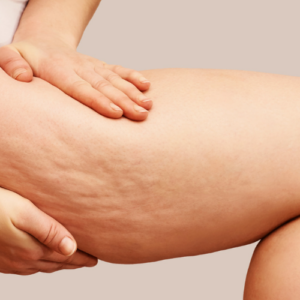
As harmless as the passage of time might seem, it does not leave the human body the same. It is evident in too many aspects of your life and particularly, written all over your body. Wrinkles and loose skin are the handwriting of the passage of time – ageing.
As time goes on, the skin of your face loses its elasticity, causing it to droop. This leads to a change in facial structure. This change in the shape of your face might not be too tolerable.
The desire to keep the face looking young led to the development of the facelift procedure. It is driven at literally giving the face a lift following the effects of ageing. This article will be addressing face lifting and how to improve the results of a facelift.
Related article: 5 Best Anti-Aging Treatments
What is a facelift?
Technically known as a rhytidectomy, a facelift is an aesthetical procedure performed on the face to give it a more youthful outlook. A facelift procedure aims to remove wrinkles by the reduction of the excess skin folds that sag on the jaw and cheeks.
During a face-lift, a flap of skin on each side of the face is pulled back. Tissues below the skin are then surgically altered to return the contour of the face to a more youthful shape. Before the flap is sutured closed, excess skin is removed.
At times, it does not just end on the face. A neck lift (platysmaplasty) can also be performed alongside a traditional facelift. This is to reduce the fat and loose skin in the neck region.
It is important to note that a face-lift does not change the quality of the skin. Sure, your skin will be tighter and chiselled. However, it cannot eliminate skin conditions such as melasma, acne, etc.
Related article: Why a Natural Face Lift is your Best Anti-Aging Treatment
How to improve facelift results
The following key points will help you make sure that the results of your facelift procedure are positive:
1. Choice of medical aesthetician
This is extremely important. A facelift is only as good as the “face lifter.” It is therefore important to choose your aesthetician carefully. When on the verge of making a choice, it is not advisable to pick based on ratings or an awesome media outlook. While they may be excellent medical aestheticians, they might not be best suited for a facelift procedure. Knowing how to improve facelift results begins with knowing how to choose the right expert for the job.
The various parts of the human body have their intricacies. As such, extra years are spent focusing on different body parts to become a specialist. So, your trusted expert for laser resurfacing might not be the best choice for a facelift.
Also, the more an aesthetician practices, the higher their competency levels. This is why you have to choose medical aestheticians who specialize in facelift procedures and perform it more often. This will play a significant role in the eventual outcome of the treatment.
2. Avoid indiscriminate sun exposure
The tanning effect of the sun is the culprit here. If you do not want your surgical sites to heal with visible stripes, you need to stay away from the sun for a while. This instruction, after a surgical or nonsurgical skin therapy, should be taken seriously.
You have to protect yourselves against the ultraviolet radiations which might cause pigmented scars. Your skin may react to UV rays leaving a fine facelift with rashes or widespread discoloration. After all, these ultraviolet rays are also part of the ageing factors that bring about wrinkles and pigmentation.
Hyperpigmentation can also occur from the breakdown of essential proteins and other structural factors of the skin. This can ruin a facelift and reduce the outlook and durability.
After a facelift, use protective wear such as sunglasses, sunscreens, and hats.
3. Avoid smoking nicotine-containing compound
Aside from the myriad of negative effects smoking might have, it is not a good idea after a face-lift. As a matter of fact, the post-surgical impacts of smoking are not desirable.
The chemical constituents of cigarettes, including nicotine, have effects on the blood vessels. They cause constriction and narrowing of these blood vessels. This reduces blood supply to surgical sites, which subsequently leads to the impairment of healing at the sites.
A lack of oxygen and essential nutrients needed for tissue regeneration leads to unfavourable outcomes after a facelift procedure.
Cigarette smoking also increases the risk of your surgical site being infected. Nicotine inhibits your immune system. A situation that may lead to complications for your facelift results.
Lastly, prolonged use of nicotine can cause terrible side effects for the skin, including discoloration and dehydration. The level of circulatory insufficiency makes it difficult for nutrients and skincare products to be relevant.
4. Get on a skincare regimen
As earlier established, a facelift does not change the quality of your skin. If you want to have the best post-operative outcome, you still need to manage your skin deliberately.
Depending on your budget and skin type, there is a myriad of plans available to choose from. With each year that passes, you’ll notice diminishing collagen and hydration, along with visible pores, discoloration, and fine lines.
Related article: Are Skin Rejuvenation Treatments Worth The Money
5. Cultivate good eating habits
Since a facelift does not improve skin quality, you have to take it upon yourself to make sure your skin is well taken care of. Ensuring you eat good food is a great place to start.
Meals of exceptional quality and clean eating can significantly influence your skin appearance. Vitamins and minerals are important for healing. They are useful in promoting post-treatment healing through the synthesis of collagen and other relevant collective tissue materials needed.
Good blood perfusion due to sufficient blood supply helps in improving recovery and promotes a vibrant skin. Also, drinking a lot of clean water to keep you hydrated is good for your skin after a facelift.
Be mindful of disruptors like sugar which can denature lipids, proteins and other nourishing components by glycation. Also, as much as possible, avoid alcohol consumption.
Related article: Best Ways to Hydrate Your Skin
Complications associated with facelifts
There are several risks attached to the procedure which can happen at any point during a facelift. However, thanks to advances in cosmetic medical tech, these complications can be handled easily.
Some of these complications include:
Hematoma
This is where there is blood collocation beneath the skin, which can cause swelling. It is one of the most frequent complications of facelift surgery.
Scarring
Expectedly, sites of incisions may heal with some scarring which is usually concealed by the contours of the face and hairlines. Also, with the aid of corticosteroids, medications can be given to suppress the incidence of scars.
Nerve injury
Although uncommon, damage to the nerve is possible. This can have mild to severe effects including facial numbness.
Alopecia
There is the possibility of a loss of hair near the sites of incisions. Hair loss treatments may be required following this procedure.
Skin loss
During the procedure, there may be an injury to blood vessels. These injuries may compromise the blood supply to some tissues of the face. It can, however, be managed with the use of drugs and wound dressing.
Am I a good candidate for facelifts?
These are many reasons why you may not be eligible for a facelift. At least, until there is a fix. They include:
If you are using blood-thinning drugs
These are drugs used to prevent the formation of clots. These drugs are not a good idea in the case of a facelift. They can cause the formation of hematoma as it increases the risk of bleeding. These drugs include generic blood thinners, nonsteroidal anti-inflammatory drugs (NSAIDs like Aspirin), Ginkgo biloba, fish oil, and others.
If you suffer from chronic diseases
If you have a disease condition that hampers the formation of blood clots, it might be difficult recommending you for a facelift. Also, if you suffer from poorly controlled diabetes, hypertension, or any cause of delayed wound healing and heart complications, a facelift might not be recommended.
If you smoke heavily
Smoking predisposes to the formation of hematomas and causes delayed wound healing.
If you have drastic weight loss and gain
If you are known to lose and gain weight repeatedly, a facelift might not be recommended. Drastic weight changes can alter the outlook of your results.
Related article: Skin Resurfacing – which is the best treatment for you?
What to expect during a consultation
After choosing a suitable medical aesthetician, the first step is a consultation. During a consultation, you should expect the following:
History taking and examination
You should be ready to answer several questions. This will include your bio-data and past medical history, including previous surgeries, hospital admissions, and drug allergies.
Your social history will also be explored. Also, questions may be asked on smoking, drug or alcohol use. Your facelift expert will also proceed to do a physical examination. They may also contact your regular doctor for any piece of information that might be relevant.
Medication review
You will be asked to provide the names of all the medications and herbs you are using. This information will include dosages and should encompass over-the-counter medication.
Facial examination
Pictures of your face are going to be taken at various angles, including close-up pictures of some features. Your bone structure and the shape of your face will also be examined, paying particular attention to the fat distribution and skin. This is aimed at arriving at the best choices for your facelift.
Clarification
Questions will be asked about the results you hope for. Also, your consultant will attempt to clear all doubts and concerns. You should also be educated on the process and possible outcomes. You will be told what changes to expect and informed about the results that a facelift cannot achieve.
Related article: How to Choose the Right Botox Clinic in Canada
Preparation for a facelift
In preparation for a facelift, you will be given some instructions on what medications you can take and those you have to stop. You should discuss what drugs are safe and the ones that should have their dosages adjusted.
Other tips for the procedure include:
- Use a germicidal soap to wash your face and hair on the day of your procedure.
- You are typically not allowed to eat before the surgery. You may be able to take water and your medications, though.
- Look for someone to help you during the recovery phase. If the procedure is carried out on an outpatient basis, arrange with somebody to drive you home after the surgery. Let this person stay with you for the night.
Procedure for a facelift
Pre-surgery
The procedure may be performed under general anesthesia – that is, you will be unconscious. It can also be performed using local anesthesia and sedation. For this option, your face will be numbed, and you will be put to sleep. Usually, general anesthesia is recommended.
During the surgery
The whole procedure requires the elevation of the skin of the face and making the underlying muscles and tissues firm. The fat in the neck may also be remodelled, redistributed, or removed. During the surgery, your skin is pulled over the restructured face, and the excess skin is removed. The flap is then stitched or taped.
There are various techniques which are based on the type of incision made. Some of these incisions include:
● The traditional incision
This begins from your temples, goes downwards and around the front of your pinna. The incision terminates at the back of the ears, usually at the lower part of the scalp. There might be another incision below your chin to improve the outlook of your neck.
● The limited incision
This involves shorter incision from the hairline just above your ear. It goes around the front of your ears. It, however, does not reach down to the lower scalp.
● A neck lift incision
This starts from the front of your earlobe and continues around your ear into your lower scalp. The expected duration of surgery should be less than 4 hours.
Post-surgery
After a face-lift, you may experience pain, which may be mild or moderate. The incision site may sometimes show drainage, swelling, and feelings of numbness. However, if you feel severe pain, breathlessness, palpitation, or chest pain, you should contact your doctor immediately.
A bandage is used to apply gentle pressure on the incisions. This is aimed at reducing the swelling and keeping the edges closed. A drainage tube may be installed under your skin to drain excess fluid from the surgical site.
You should spend subsequent days after the surgery with your head elevated even while resting. Also, ensure you adhere to the post-operative instructions from your doctor. This would include taking your pain medication and anti-inflammatories
It is very important to meet up with your follow-up appointments. There would be several of them scheduled after your procedure.
Personal care following facelifts
Optimal self-care will ensure a better outcome of your facelift and reduce the risk of complications. Therefore, you have to take it very important. Some tips to follow include:
- Ensure you adhere to the recommended wound management routine
- Never try to pick the scab that develops over the incisions
- Avoid the use of makeup
- Vigorous activities should be avoided
- Get a sunscreen and avoid direct exposure to sunlight
- Be mindful of the soaps and shampoos you use. Your aesthetician will recommend suitable ones for you. Also, it will help you to improve the facelift results.
- Avoid clothes that you have to pull down from your head
- Do not braid, bleach, or dye your hair over the following two months.
A facelift is a surgical procedure instrumental in giving you a youthful outlook. Although it might not be the most pleasant experience, the eventual outcome is really worth the procedure. Getting information on how to improve the facelift results sets you up for a great outcome.
To improve your overall beauty, it is best that you combine other treatment techniques with a facelift to make sure that your skin is in top shape. Book a consultation session with us today!
Book Free Consultation
"*" indicates required fields
-
Facebook
-
Twitter
-
Linkedin






